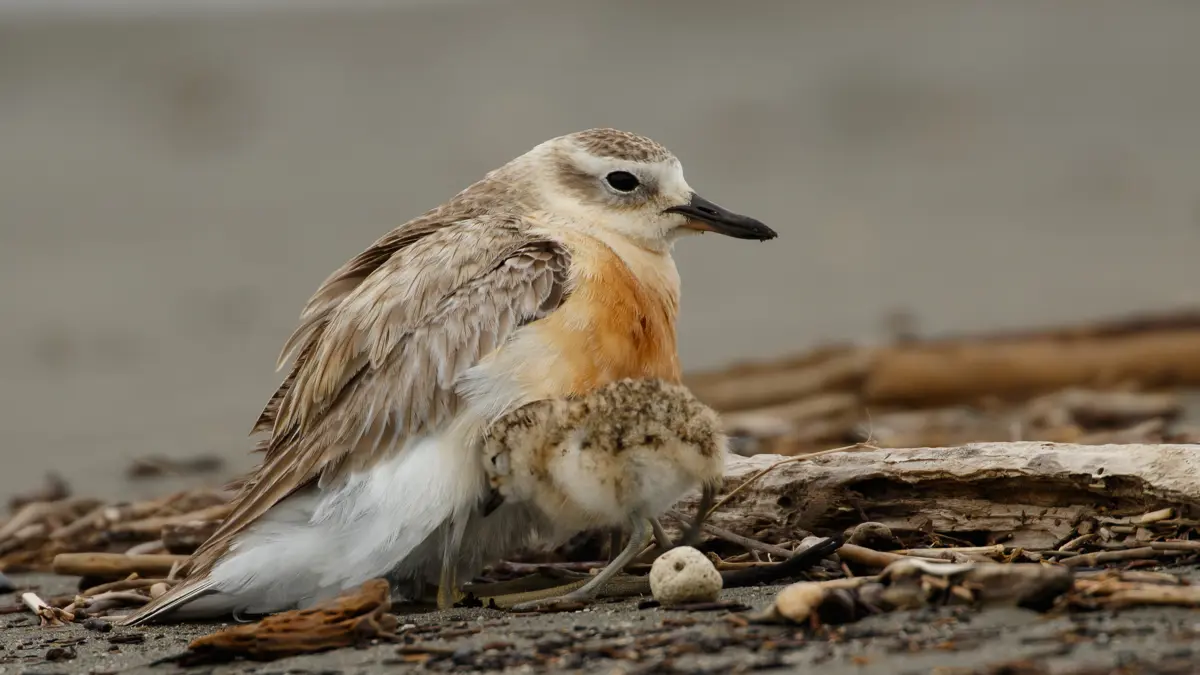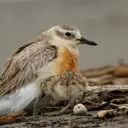Why we want to keep our feathered friends safe
2 Sep 2025
What’s special about the Kāpiti Coast? The clue’s in the name! We love living here because of our beautiful coast and natural environment. It’s one of the big draws for visitors and residents who help many local businesses make a living.
Conservation is important for maintaining biodiversity, which sustains ecosystems, or the beautiful bubble of life we live in! Thriving ecosystems prevent the loss of genetic material among our plants and animals. A diverse and healthy environment has intrinsic value for people.

Photo credit: Roger Smith
In short, it creates opportunities for activities that make us happy and healthy – as a council, that’s part of our role too.
The Kāpiti Coast’s stream and river mouths are extremely important for shorebirds. They provide nesting spots and the food basket that supports these birds through the nesting season and raising their young. But they can also be busy places for human activities so for the sake of the birds and their habitat, these areas especially need our protection.
Our biodiversity staff are sad to report that pohowera (banded dotterel) and tūturiwhatu (New Zealand northern dotterel) are in real trouble on the Kāpiti Coast. Nationwide they are both on the threatened species list.
We really want to highlight the plight of our shorebirds, and stress how incredibly important it is that people are aware of their impact especially around stream and river estuaries where these gorgeous wee birds build their nests and raise their young.
Dotterels nest in the sand and their eggs and chicks are also sand coloured, so they are incredibly vulnerable to predators and people, dogs, horses, and vehicles. Their nests are also susceptible to flooding and storms, which are becoming more extreme and frequent due to climate change.
These birds show amazing behaviour to protect their young. The parent pretends to be injured to draw predators away from the nest. If you see a bird behaving like this, it has eggs or chicks nearby so leave it alone and move away from the area.
Council, the Department of Conservation and volunteers rope off nesting areas we know about, but that doesn’t mean dotterels and other shorebirds aren’t nesting in other parts of the dune and beach areas.
Nesting season starts around September, a time when they are particularly vulnerable. Please take care, as these birds’ well-camouflaged nests are almost impossible to see until too late.
The Waikanae River mouth and sand spit is a scientific reserve, so a no-go area for dogs (even on lead), horses, and vehicles. There are other nesting sites at stream mouths along our coast, as well as the Ōtaki River.
At the start of the breeding season our staff put up signs to indicate usual nesting sites so please, respect the restrictions around the Waikanae River scientific reserve. In other areas, keep dogs on leads and vehicles away from stream and river mouths.
And help us to educate others gently and respectfully, rather than shaming them on social media.
If we take care of these places, other shorebird species that we should have in greater numbers on the Kāpiti coast might just come back too.*
* Other birds that we should see here in greater numbers: pohowera (banded dotterel), tara (terns), kōtuku (white heron), kuaka (bar-tailed godwit), tarāpunga (black-billed gull), ngutu pare (wrybill). Even the most quintessential and ubiquitous of beach birds, the common red-billed gulls, are sadly vanishing.



